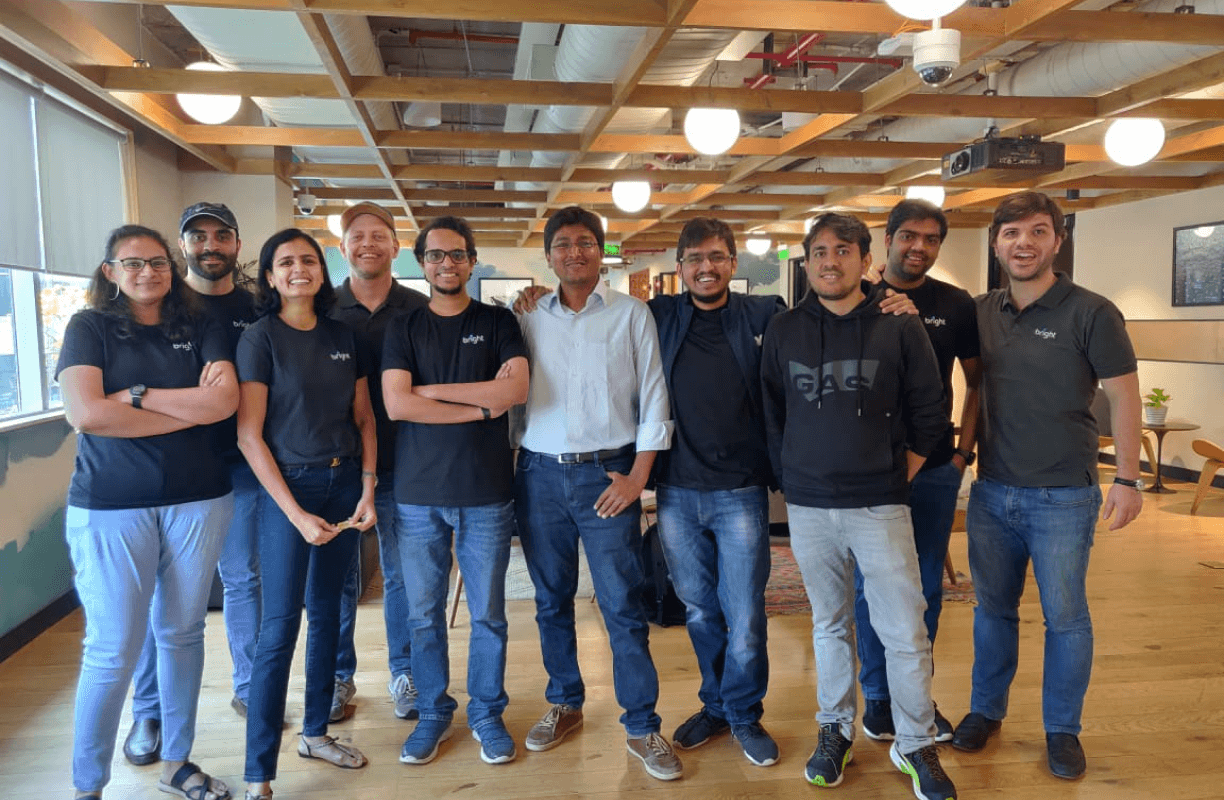One of five team values at Bright is Sustained Personal Growth. Every Bright-one has a path for fast professional growth, whether an intern or an executive. Bright is an environment for individuals to expand, learn and grow fast in their careers.
We live to Learn. We learn to Lead.
Our Senior Team at Bright (Avi, Petko, Varun, Alex, Jayashree, Carolyn, Amit, and Avinash) have a combined 90 years experience in Technology, Data Sciences and Consumer Product building.
They have watched many people grow in their careers, and have managed and developed more than 250 individuals across their careers.
We asked them for their views on the 10 markers that demonstrate a Bright-one is one their fastest trajectory of growth. Here is what they shared:
1. You have ownership for a project focused on user-outcomes
“Doing stuff” and actual ownership are two very different approaches. An owner feels fully in control to deliver a project to its outcome, which could lead to success or failure. Someone who just does stuff - or executes - runs through a task list, and says “all done” at their end, whether or not their activities made any real difference in the world.
An owner asks ‘what will really make this successful’. If the existing tasks don’t work, they think hard on what else is needed. Their goal is real success - a real difference - and they are always watching and adjusting to get this. They are fulfilled by outcomes, not just outputs such as a task list.
2. You drive your own project: plan your own time and deliverables
Everyone is capable of leading projects. Projects are how we get new work done, as we are building products for people. Early in your career, a project just involves yourself and you are the single driver of what needs to be done. Later in your career, a project can have many moving parts, including tens, even hundreds of other people. The way someone operates in a project - even from early in their career - is a strong sign of whether they are going to grow as a manager and a leader.
Someone who drives a project thinks carefully about the time needed, all the activities that are needed, organizes these into a timeline (or Gantt view for longer projects), and is very conscious of all the inputs - the deliverables - to get the project fully executed. They build a plan and they stick to it - they execute on time.
3. You understand how your project contributes and drives the Bright mission
In a mission-driven company, we are all playing our role.
Famously, John F Kennedy asked the janitor at a NASA facility, ‘Why are you working so late into the night?’ And he said, “Because I am working to send astronauts to the moon.”
Everyone is playing their part in a mission-driven organization. It is important to know the mission, and to reflect this in our language and how we talk about our work. It is important to see the clear connection between our work and how the company can achieve its mission. This gives us a clear purpose to what we do every day. Most importantly, it ensures we stay on course towards that mission.
It shows in our new team members: who has internalized the mission and uses the mission to guide their day-to-day work, and how they talk about their work to other team members, and our customers.
4. You are measuring your metrics every week, and react to keep things on path
Metrics are the lifeblood of getting stuff done in the world. Why? You need to measure to know you have made a difference.
There are input metrics: ensuring you set up your execution, such as ‘building the plans and design’. Output metrics, such as ‘the project was launched on time’. And critically. outcome metrics, measuring what really matters, e.g., getting more conversions in your product funnel, or new users from a successful marketing campaign, or a better customer service score.
You need to know the difference. Measure metrics well. Always stay really focused on measuring the outcome metrics, as regularly as every week from your work. It ensures your work is always making a difference.
5. You have strong team relationships and cross-functional connects across Bright
As people, we work bigger and better, when we work together. To make that possible, we need strong professional relationships: good communication, ability to enjoy working together and trust to keep our promises to each other.
A company is made of many different teams that must come together. The individuals who build strong relationships far beyond their immediate team and function, set themselves up to achieve more across the company.
There comes a time when everyone’s work requires big input or support from someone on a different team. Strong relationships means that happens faster and with higher quality.
6. You know what your next step-up role is and what skills you are developing
An individual who is growing with purpose has their sights on what their step-up role is going to be. They are determined for it. They have visualized it.
They get clarity on what their next step-up role is. This is not the same as getting a promotion. This is knowing how you grow your responsibilities and show that you have grown your skills. When people are able to successfully do this several times, it sets them up for a successful promotion.
This skill means having a clear view - every week - of how you can step up in your role and do a little more, to show your skills are growing and so are your responsibilities. And yes, this can happen every single week, not month, or quarter or year. In a learning organization, this is possible every week.
7. You are always curious, to learn across the product, company and teams
We learn by asking great questions. Einstein was famous for this from early in his research. Companies and products can raise complex subjects. People who cultivate a mindset of curiosity - always investigating and always probing in areas they do not fully understand - will just naturally learn much more, much quicker.
They will learn outside their immediate role, outside their immediate team’s work and will start to see the full picture - of how everything comes together - much sooner. They are able to make interesting connections between different parts of the company, or insights in a user’s journey.
8. You are mentoring, coaching or supporting new team members
Mentorship and coaching are not just the responsibilities of senior people with grey hair and 50+ years of experience. We all have the ability to mentor and coach someone who is even just a few years less experienced than us.
At Bright, team members are expected to act as buddies and mentors as soon as six-months after joining. We can start to practice the skills of mentoring and coaching early in our career, because it sets us up to be excellent managers later in our career.
These are actually very complex skills that take many years of practice and experience to master. The earlier we start practicing in our career, the faster we have a path to real management and leadership.
9. You are conscious and deliberate to receive feedback and coaching
We learn with good feedback and coaching. Especially when this is well explained by a mentor, manager or leader. Good learning organizations have a regular and structured cycle of feedback with their team. Team members have one-on-one connects every 2 weeks at Bright, and every function has a well-developed ‘Capability framework’ to guide and structure our growth paths: what skills and how to demonstrate them.
However, what really makes the difference between people: those who take feedback and coaching seriously in contrast to those who just “sit through the process.” Someone who listens well, takes notes, reflects, applies, tries something different, continues to learn, and continues to seek feedback - is on a much faster growth trajectory, often 2 or 3 faster than someone who doesn’t quite pay full attention. That’s the difference between achieving in 10 years what it can take others 30 years to accomplish.
10. Your responsibilities are growing every 2 weeks
If you are learning at this pace, and thinking about this every week, we’ll see very visible results in someone’s work and profile. What they are doing and what they own is growing every 2 weeks.
Just reflect on that for a moment. Yes, we said every 2 weeks. Their job is materially changing every 2 weeks, in a way that their manager and team supports. This is what fast growth really looks like. In the course of a year, there are 20-25 step-ups for someone’s role. They can achieve a legitimate promotion every 6 months to 1 year.
This is one of the fastest growth trajectories someone can have. Most organizations would say 3 years to grow. At a Learning Organization, where individuals take ownership of their trajectory and achieve these 10 markers, we repeatedly see people achieve formal promotions and role step-ups within 6 months to 1 year. And they do this again and again over 3 years, 6 years and the rest of their careers.



